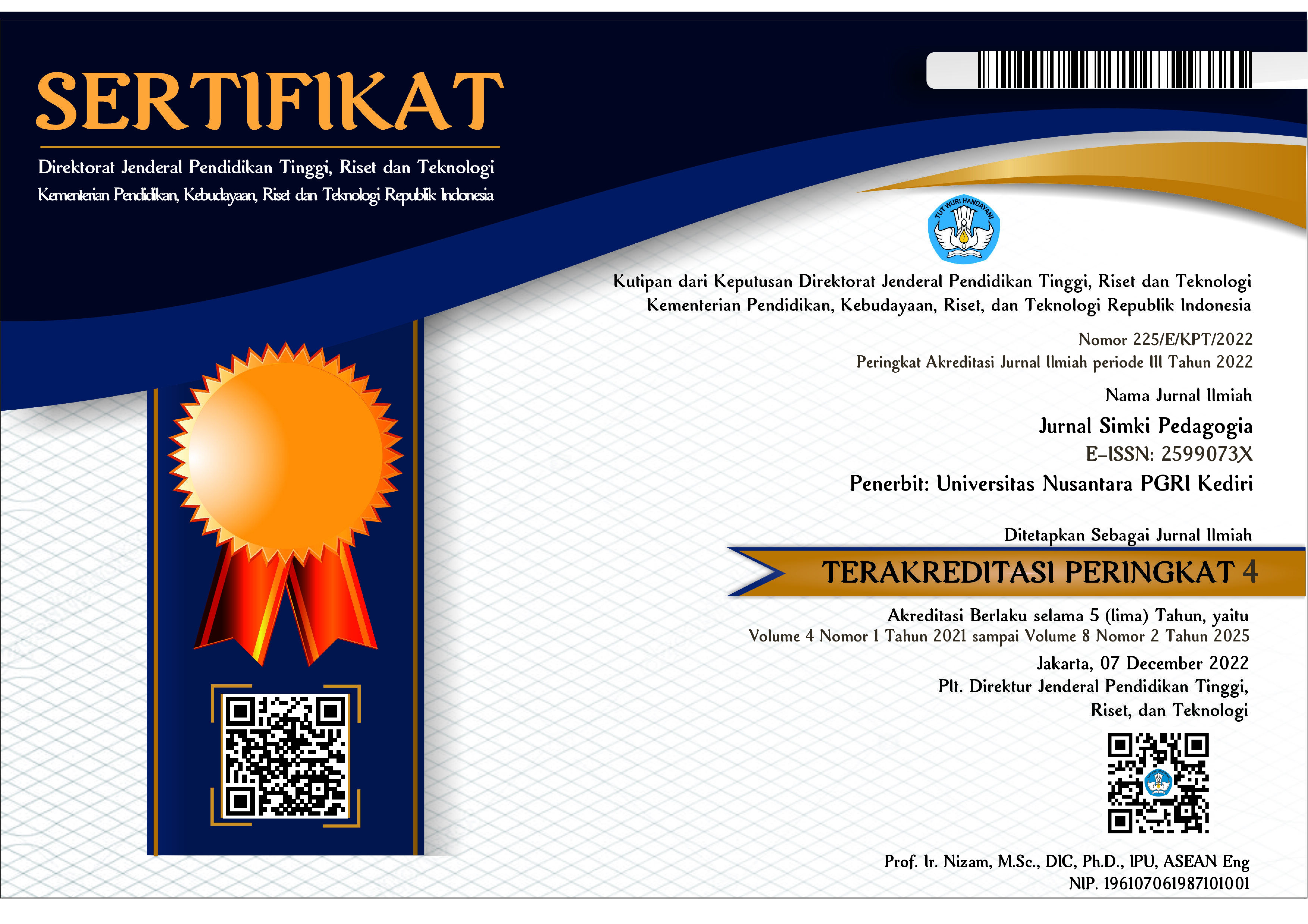Utilizing AI (Artificial Intelligence) to Have Positive Impacts on Students in Learning English
 Abstract views: 1452
,
Abstract views: 1452
,
 PDF downloads: 521
PDF downloads: 521
Abstract
This research explored the use of Artificial Intelligence (AI) to positively impact on students in learning English. However, the study also recognized the potential negative impacts of AI, such as over-reliance on technology, reduced language expression and grammar proficiency. The purpose of this phenomenological qualitative research was to investigate how AI can be utilized to positively influence students in the context of English language learning. The research method involved collecting and analyzing first-hand experiences from students to understand the nuances of AI integration in English education. In this study, the researchers took second semester students of the English Education Study Program, University of Nias as participants. The research was conducted at the University of Nias. How to use AI to have a positive impact on students in learning English is by filtering the answers generated from AI.
Downloads
References
Akbarani, R. (2024). Use of Artificial Intelligence in English Language Teaching. International Journal of English Learning and Applied Linguistics (IJELAL), 4(1), 14–23. https://doi.org/10.21111/ijelal.v4i1.10756
Awalin, A. S., Iftanti, E., & Umami, M. S. M. (2023). Students’ Perceptions on the Impact of Artificial Intelligence on English Grammar Learning. The Ananual International Conference On Education, 169–174. https://jurnalfaktarbiyah.iainkediri.ac.id/index.php/proceedings/article/view/1788
Bartneck, C., Lütge, C., Wagner, A., & Welsh, S. (2021). An Introduction to Ethics in Robotics and AI. In SpringerBriefs in Ethics. https://doi.org/10.1007/978-3-030-51110-4
Bunga, E. L. M., & Katemba, C. V. (2024). Comparing translation quality: Google Translate vs. DeepL for foreign language to English. Edusaintek: Jurnal Pendidikan, Sains Dan Teknologi, 11(3), 1147–1171. https://doi.org/10.47668/edusaintek.v11i3.1264
Creswell, J. W., & Creswell, J. D. (2018). Mixed Methods Procedures. In Research Defign: Qualitative, Quantitative, and Mixed M ethods Approaches.
Elida, Y., & Ismail, S. (2023). Improving English Vocabulary through Artificial Intelligence ( AI ) Chatbot Application. 8(2), 63–67. https://doi.org/10.31004/jele.v8i2.308
G. Thippanna, PVSN Jyothi, & P Krishnaiah. (2023). An extensive review of the benefits and drawbacks of AI tools. World Journal of Advanced Research and Reviews, 20(3), 1668–1673. https://doi.org/10.30574/wjarr.2023.20.3.2636
Han, B. (2019). Application of artificial intelligence in autonomous English learning among college students. International Journal of Emerging Technologies in Learning, 14(6), 63–74. https://doi.org/10.3991/ijet.v14i06.10157
Islamuddin, R., Telaumbanua, Y. A., Laoli, A., & Zebua, E. P. (2023). Analysis of The Application of Video Learning Media on Students ’ Learning Interest at The Tenth Grade of SMA Negeri 1 Gunungsitoli in 2022 / 2023. 06(01), 8375–8386. https://doi.org/10.31004/joe.v6i1.4263
Khasanah, U., Madjdi, A. H., & Nuraeningsih, N. (2022). Students’ perception on the use of Google Translate in learning Pronunciation. Borneo Educational Journal (Borju), 4(1), 50–60. https://doi.org/10.24903/bej.v4i1.912
Lase, P., Maru, N., Telaumbanua, Y. A., & Zebua, E. P. (2023). The Analysis of Students’ Ability in Speaking by Using Information Gap Strategy at the Eighth of SMP Negeri 1 Gido in 2022/2023. 7(2), 2122–2131. https://ummaspul.e-journal.id/maspuljr/article/view/6535
Luckin, R., Holmes, W., Griffiths, M., & Forcier, L. B. (2016). Intelligence-Unleashed-Publication. https://www.pearson.com/content/dam/one-dot-com/one-dot-com/global/Files/about-pearson/innovation/Intelligence-Unleashed-Publication.pdf
Muhammad Yahya, Wahyudi, & Akmal Hidayat. (2023). Implementasi Artificial Intelligence (AI) di Bidang Pendidikan Kejuruan Pada Era Revolusi Industri 4.0. Seminar Nasional Dies Natalis 62, 1, 190–199. https://doi.org/10.59562/semnasdies.v1i1.794
Robert, A., Potter, K., & Frank, L. (2024). The Impact of Artificial Intelligence on Students ’ Learning Experience. February. https://doi.org/10.2139/ssrn.4716747
Stewart, J. C., Davis, G. A., & Igoche, D. A. (2020). AI, IoT, AND AIoT: DEFINITIONS AND IMPACTS ON THE ARTIFICIAL INTELLIGENCE CURRICULUM. Issues in Information Systems, 21(4), 135–142. https://doi.org/10.48009/4_iis_2020_135-142
Švab, I., Klemenc-Ketiš, Z., & Zupanič, S. (2023). Novi Izzivi v Znanstvenih Publikacijah: Navajanje Referenc, Umetna Inteligenca in Klepetalni Robot ChatGPT. Zdravstveno Varstvo, 62(3), 109–112. https://doi.org/10.2478/sjph-2023-0015
Yang, H. (2023). The negative impact of artificial intelligence technology on college English teaching and the countermeasures. EnPress Journals, 6(4), 235–241. https://doi.org/10.24294/ijmss.v6i4.3127
Copyright (c) 2024 Yasminar Amaerita Telaumbanua, Nesti Arni Hulu, Ayu Kartika Zai, Delan Septiani Hulu, Ednis Sartika Ndruru

This work is licensed under a Creative Commons Attribution 4.0 International License.

Jurnal Simki Pedagogia : https://jiped.org/index.php/JSP/index is licensed under a Creative Commons Attribution 4.0 International License.
















